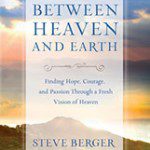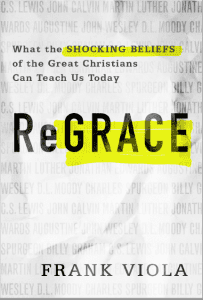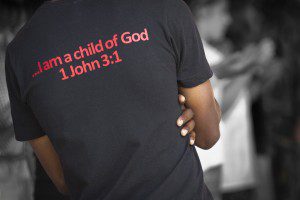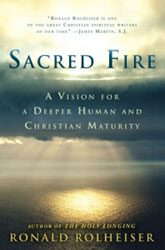 Sacred Fire: A Vision for a Deeper Human and Christian Maturity, by popular Catholic author Ronald Rolheiser, is currently featured at the Patheos Book Club. We invited Fr. Rolheiser to share some thoughts about the new book – and the meaning of Christian discipleship – here.
Sacred Fire: A Vision for a Deeper Human and Christian Maturity, by popular Catholic author Ronald Rolheiser, is currently featured at the Patheos Book Club. We invited Fr. Rolheiser to share some thoughts about the new book – and the meaning of Christian discipleship – here.
Sacred Fire is the sequel to your best-selling contemporary classic, The Holy Longing, which was published 15 years ago. Did you always intend to write a sequel? Why now?
Yes, I always intended a sequel to The Holy Longing. The last chapter of the book suggests that a spirituality should follow from the principles of THE HOLY LONGING and, in caption, gives some of that spirituality. SACRED FIRE tries to lay out that spirituality in some detail and, importantly too, show where it fits into the overall paradigm of the spiritual life.
Why now? I needed time to research, teach, and mature the ideas for a SACRED FIRE. As well, given that I have a full time, and very time-demanding job, I needed to have some Sabbatical time within which to write SACRED FIRE. I got that time in 2012-2013 and, hence, SACRED FIRE. That’s its origins and its timing.
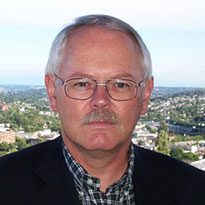 In Sacred Fire, you talk about three stages of discipleship — essential, mature, and radical. How does one identify his/her current stage of discipleship and what are some of the challenges of moving from one stage to the next?
In Sacred Fire, you talk about three stages of discipleship — essential, mature, and radical. How does one identify his/her current stage of discipleship and what are some of the challenges of moving from one stage to the next?
In terms of identifying one’s own current stage in the journey, there are real dangers in self-diagnosis. One is best to do this with the help of a spiritual mentor. However, that being said, the movement between “essential” and “mature” is somewhat easier to determine, i.e., basically it is a question of “Am I living for others or am I living for myself?” Or, in another criterion: Is my biggest concern: “How will this turn out for me?” Or, “How can I be helpful here?”
What are the challenges in moving from one state to the next?
In moving from “essential” to “mature” the major challenge is to awake from the long sleep of adolescence, namely, to channel our energies (all of them, not least our sexuality) in a way that they are life-giving for others (and of course too for ourselves). But this is hard in our culture because so much within our culture invites us and tempts us never to grow up, to always be the adolescent.
In moving from “mature” to “radical” the challenge is to “let go”, to let go of virtually everything we have accumulated in our lives so that when we finally have to die we can die without clinging, without bitterness, without anger, and without despair. As the last chapter of SACRED FIRE suggests, we have to be willing to make our death our final act of giving. But, of course, this is very, very difficult, everything within our natural instincts resists. Life wants always to preserve itself. Nobody, unless he or she is clinically depressed, wants to die. This earth, for all its shortcomings, is the only life we know.
The primary focus of Sacred Fire is on the second stage, mature discipleship, which coincides with the struggle to give our lives away. What do you think is the most challenging aspect of mature discipleship? What is the most rewarding?
What is most challenging? Accepting and living out the fact that our lives are not our own, but that we belong to community and to a reality larger than ourselves. This is what older cultures used to try to teach in their initiation rites. Since, in our culture, we do not really have any deep, meaningful initiation rites (to turn a girl into a woman and a boy into a man) we end up, mostly, having to “self-initiate” and that can take a long time and have a lot of painful false starts, false turns, and setbacks. Sometimes too we simply don’t make it. The thousands of young people who die every year from drugs and senseless accidents are mostly young people trying to “self-initiate”. Within “mature” discipleship itself one of the biggest challenges is simply to sustain enthusiasm and energy through the many years of giving. John of the Cross, for example, said that during out “mature” years the biggest challenge in sustaining our prayer lives is flat-out boredom. It is not easy to sustain good will, energy, and selflessness for 60-70 years.
What is most rewarding? Mature living is its own reward! Living for others brings us joys that dwarf the pleasures of our adolescent years. Just ask a young mother how the joy of being a mother rates in relationship to the partying she did in adolescent years. Goodness brings its own reward. It’s like some of those ads inviting us to keep slim that say: “Nothing feels as good as being this healthy!” Well, nothing feels as good as being unselfish and giving life for others.
In Sacred Fire, you write, “God does not meet us in the abstract but in our real lives.” What can we do to ensure that we are ready to accept God’s invitations to us in our daily lives?
All we can do is to live honestly – and our honesty will leave us open, as open as a loving womb waiting to receive God’s seed.
What do you hope readers get out of this book?
I nurse a double hope here:
1. That readers will sense in this book a “palatable” invitation to move from being good people to being greater people.
2. That SACRED FIRE, in the places where it talks about the stages of the spiritual journey, will give readers a structure within which to see and understand the stages of both the human and the spiritual journey.
Your book The Holy Longing has more than a quarter of a million copies in print. On March 11, 2014 it became available for the first time in paperback. What is it about The Holy Longing that gives it such timeless appeal? What do you hope new readers will take away from it?
I wrote HOLY LONGING in response to an invitation from the then Religious Editor at Image Books, Eric Major. He asked me to write a book that … in his words … He could give to his own adult-children and friends to explain to them why he still believed in God and Jesus and why he still went to church – and that he could read himself on days when he wasn’t sure why. So the intent of HOLY LONGING was quite fundamental, basic, i.e., to give a contemporary apologetics of sorts. Eric Major’s hunch was right. The book found a huge market, not just among Roman Catholics, but within every kind of Christian church. There is a hunger, almost universal, today for this kind of book which speaks about God, Christ, faith, and the spiritual journey in a language that is faithful to the tradition but is not the normal, overt church language. Among other things, too, HOLY LONGING has become popular textbook for undergraduate theology classes in many schools and universities.
The Holy Longing is used extensively in RCIA and Faith Formation programs around the country; do you think Sacred Fire could also be used in this capacity?
Yes, that is my hope. It will take people to the next step beyond the fundamentals, but it still builds upon the fundamentals. It is the first “graduate” course after HOLY LONGING (which might be entitled, SPIRITUALITY 101).
Read an excerpt – and more – from Sacred Fire at the Patheos Book Club here.


